Students in Helsinki have been offered free school meals since 1943 – five years longer than the rest of Finland. In 2023, Helsinki's school meal tradition turned 80. Over the decades, it has evolved alongside our society, and it continues to be an important service for city residents. We have summarised the history of school meals in Helsinki from the turn of the century to the present day.
First steps
- 1896 Matters related to school dining are officially discussed for the first time.
- 1905 Augusta af Heurlin establishes the School Soup Association, the council grants financial aid to support the operation.
- 1918 The city’s central kitchen, which operated in the courtyard of the current Helsinki City Hall, is opened. Food queues are common on the streets of Helsinki, and food is distributed for meal tickets.
- 1925 Councillor Miina Sillanpää makes a council initiative for free school meals, but the attempt is not yet successful.

1940s: Free school dining begins
- The Second World War causes changes to all food operations, and during the war, the Helsinki central kitchen supplies food to the army and to children and pregnant women.
- 1943 The law on free meals for schoolchildren enters into force. Helsinki begins implementing of the law immediately, while elsewhere in Finland, the implementation of the law begins by 1948. Over time, the meal service also becomes part of children's day care.
- Meat soup, fish soup, vegetable soup or gruel is served once a day. The quality of the meals has not yet been regulated by law.
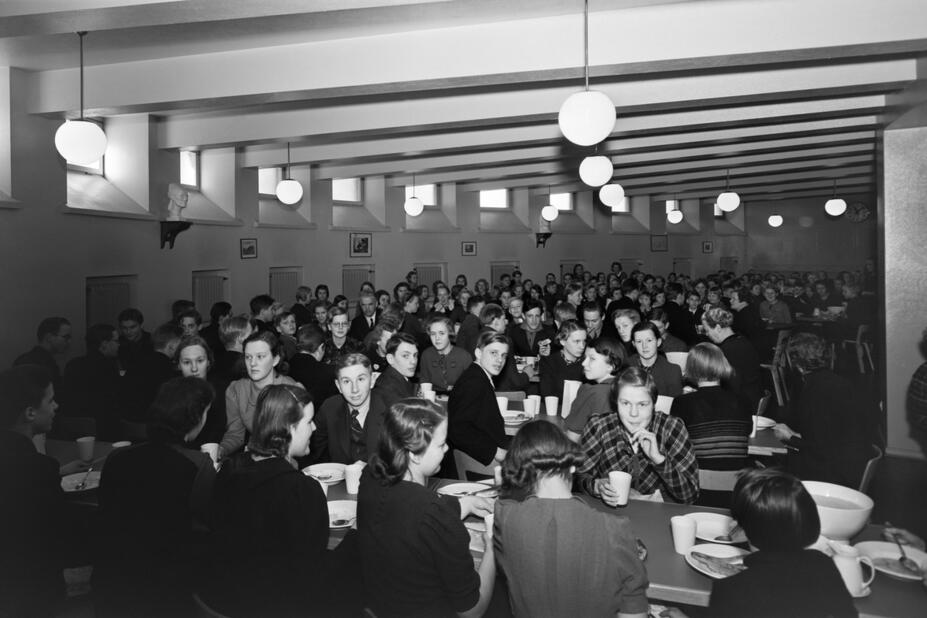
1950s: School meals become more nutritious
- Among other dishes, the two-week rotating menu includes meat soup, pea soup, porridge, dry food (a graham bun and processed cheese or a frankfurter). Milk is offered in September, October and May and gruel in the other months.
- The School Food Committee makes its first recommendation for improving the nutritional quality of school meals by increasing the amount of milk, meat and cheese and offering fresh vegetables, for example.
- 1957 The elementary school act stipulates that all pupils must be provided with a nutritious, instructive and tasty free meal.
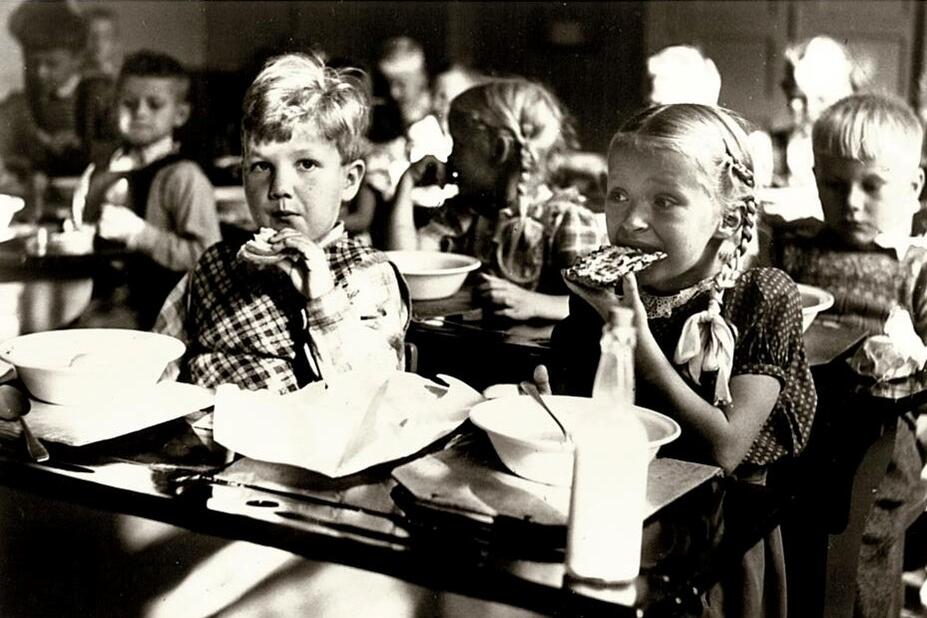
1960s: Using forks and knives
- 1968 Schools introduce forks and knives. The utensils were already ordered in the previous year, but at that time, schools did not yet offer dishes that could be eaten with a fork and a knife.
- Casseroles and sauces enter the menu, and the four-week rotating menu includes meatballs, meat stew seasoned with dill, liver stew and minced meat sauce, for example.
- The only salad on the menu is beetroot salad, and root vegetables are served chopped.
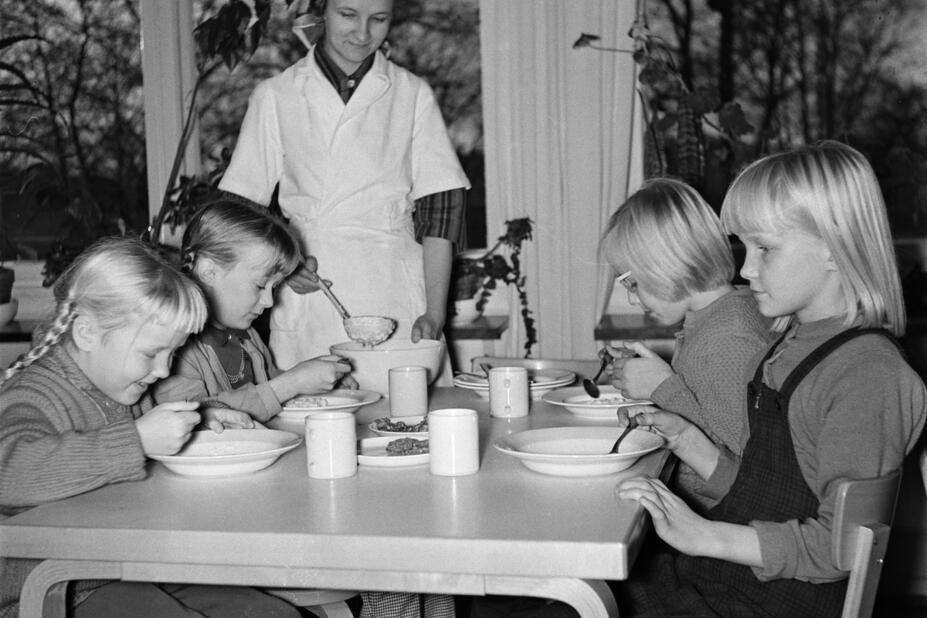
1970s: Taking special diets into account
- School meals take special diets (such as diabetes, coeliac disease, fish allergy, lactose intolerance) into account and the systematic development of menus begins.
- Six-week rotating menus are introduced to menu planning with the goal of providing a well-balanced meal every day. More attention is paid to the nutritional values of meals. Beetroot salad is accompanied by root vegetable and cabbage salads.
- 1977 The transition to the comprehensive school system increases the number of daily meals from 29,500 to 47,500, and there are 138 distribution points instead of the previous 100.
- 1979 The food factory opened on Helsinginkatu after the wars moves to new and modern factory facilities in Vantaa, where it is located to this day.
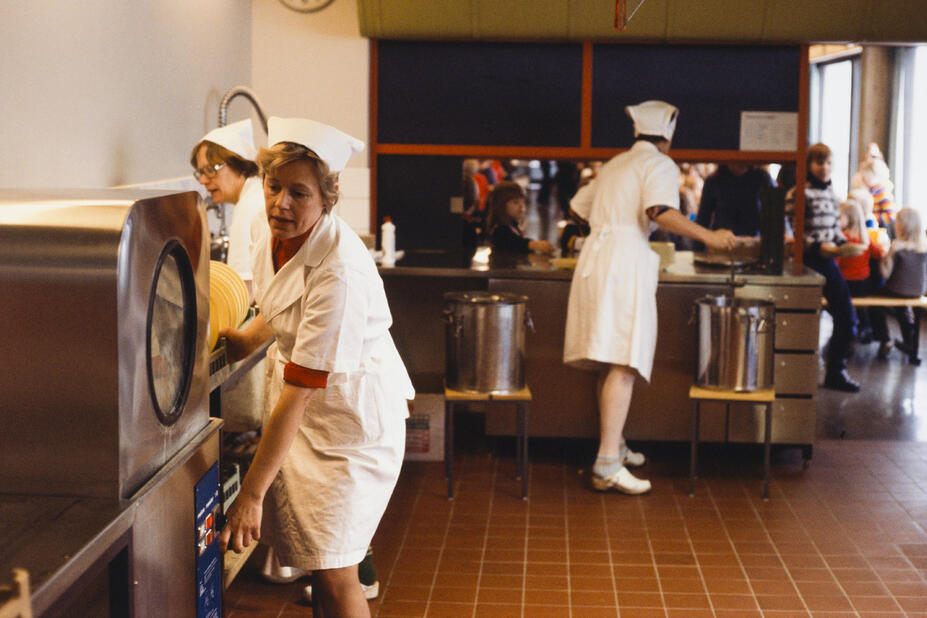
1980s and 1990s: Opinion polls and new tastes from around the world
- 1984 The first extensive opinion poll for pupils about school food (1,173 respondents) is conducted in Helsinki. Fish fingers, meatballs, meat and macaroni casserole, chicken fricassee, pea soup and minced meat risotto emerge as the pupils’ favourites.
- The 1990s The depression removes chicken legs from the pupils’ plates and liver dishes are taken off the menu as a result of the public debate on vitamin A. Meat stew seasoned with dill and boiled beef with horseradish sauce are also removed from the menu.
- Pre-treated raw materials become more common and product selections become more diverse.
- Internationalisation brings chili con carne, tortillas, woks and lasagne to school menus.
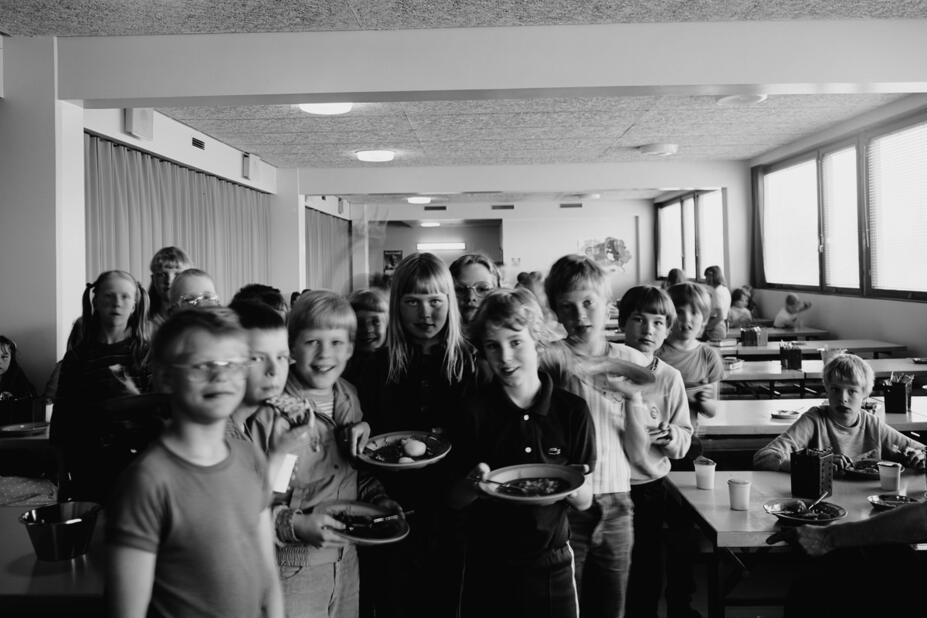
2000s: More vegetarian options and student engagement
- School canteens become school restaurants, food supply becomes food service and pupils become customers.
- The pupils' favourite dishes are fish fingers, spinach pancakes, meat and macaroni casserole, barley porridge and tortillas.
- Restaurant committees consisting of pupils are established in schools, and the committees are included in the planning of school meals.
- Attention is also paid to food waste: the Eat What You Take and Food Waste Week campaigns are first seen in schools.
- 2003 The vegan diet is taken into account in school dining.
- 2004 Snack sales start and schools begin offering nutritional snacks.
- 2007 As a pioneer in Finland, Helsinki offers vegetarian food to all interested pupils. There are two meal options available every day, one of which is vegetarian.
- 2011 By decision of the City Council, a vegetarian food day is introduced once a week in all schools during which two vegetarian main courses are available.
- 2013 Individual salad ingredients are incorporated into schools’ salad bars and the use of vegetables increases.
- With the major menu reform, more attention is paid to the appearance, texture, colour and taste of the dishes offered.
- Helsinki revives food juries to assist with menu development. Pupils are more involved in the planning of school meals.
- 2017 School Meals Day is held annually in August to celebrate free school meals.
2020s: Sustainability and continuous development
- The sustainability, climate impacts and seasonal raw materials of the food are taken into account in the planning and implementation of school meals. Pupils are involved in the development of school meals and food trends are closely monitored.
- 2019 The Helsinki City Council decides on halving the use meat and dairy products in the city's food services by 2025. School meal suggestions will be taken into account in the implementation, particularly by reducing the amount of red meat on the menus.
- School meals are systematically developed to become increasingly climate-friendly. Red meat is replaced with plant protein, poultry and fish products, for example.
- 2020 In the spring, pupils receive their school meals twice a week in single portion packs from distribution points around Helsinki as a result of the restrictions on assembly during the coronavirus pandemic. The meals cover the entire school week. The pupils take the meals with them and heat and eat them at home.
- 2022 Pupils' favourite school meals include fish fingers, spinach pancakes, tortillas filled with quorn and vegetables, chicken curry, and frankfurter sauce.
- 2023 In the autumn, the ninth vegetarian food day (there were previously eight) is added to the six-week rotating menu. The menu also includes eight days on which fish is served (previously seven).
- Today, the six-week rotating menu includes plenty of vegetarian options, meat dishes and fish courses.